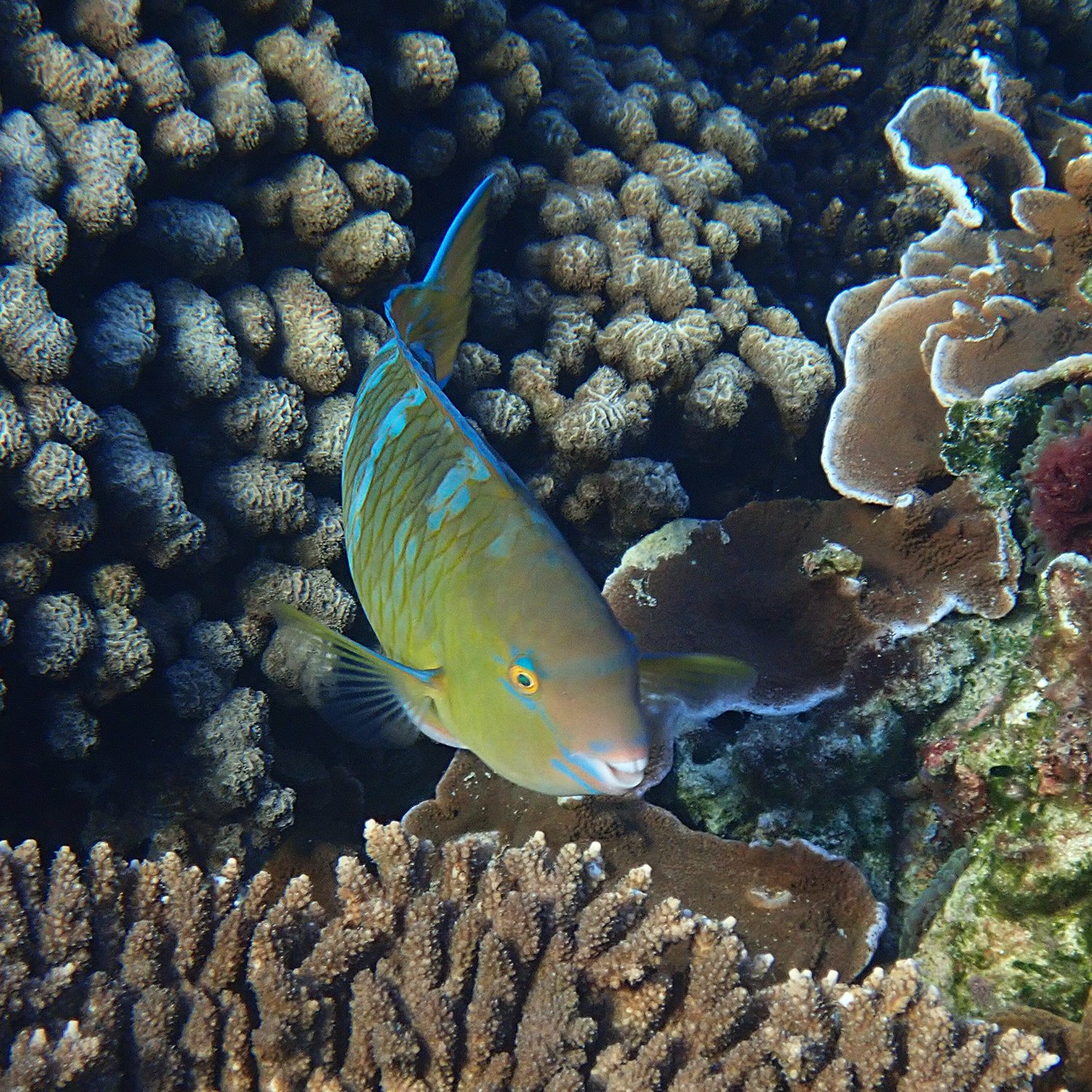I often get people excitedly telling me how they have seen a parrotfish. And it is quite possible that they have. But to be honest, the few parrotfish that we do have are rather dull when compared with their more flamboyant wrasse cousins and there are very few of them, both in numbers of parrotfish species and in the numbers you will see of each one. If I see a parrotfish, any parrotfish at all, it is rare. And when I do see them it is often just an individual or possibly a small family group. So it is more likely that the large brightly coloured fish they are telling me about is either a surge wrasse – Thalassoma purpureum, or a green moon wrasse – Thalassoma lutescens, both of which are plentiful in the lagoons.
Green moon wrasse - Thalassoma lutescens
I have observed five species of parrotfish inside the reef. You can find them all under P for parrotfish if you scroll down on my fish page on this website. Keep scrolling down to W for wrasse to see the amazing variety of these.
Parrotfish are a subspecies of the wrasse family. Like wrasses, they swim using their pectoral (side) fins, which can look a little like mini wings as they move through the water.
One of the features that sets them apart from wrasses is their toothy grin and fused teeth – about 1000 of them lined up in 15 rows – in a beak-like form, hence their name. They eat ‘microscopic filamentous bacteria that live on, and just a few millimeters underneath, the calcareous surface of the reef’, and to get at these they chow down on the hard coral skeletons. More teeth in their throat (plates known as a pharyngeal mill) grind the coral into a paste so they can extract the nutritious coral polyps and algae. What comes out the other end is beautiful white sand.
Wrasse, on the other hand, like to consume invertebrates, such as shrimps, crabs, sea urchins and gastropods. They have soft protractile lips to help them nibble.
Parrotfish are vital to the health of coral reefs. In places where they have been overfished, the ecosystem is not as productive. So perhaps it’s best to leave them where they are.
More information about parrotfish can be found in this fascinating article from the Smithsonian here: ‘Tough Teeth and Parrotfish Poop’, Ocean.






